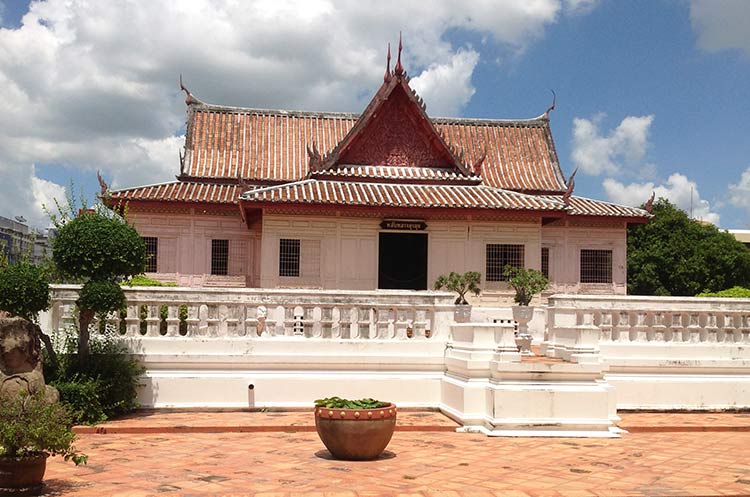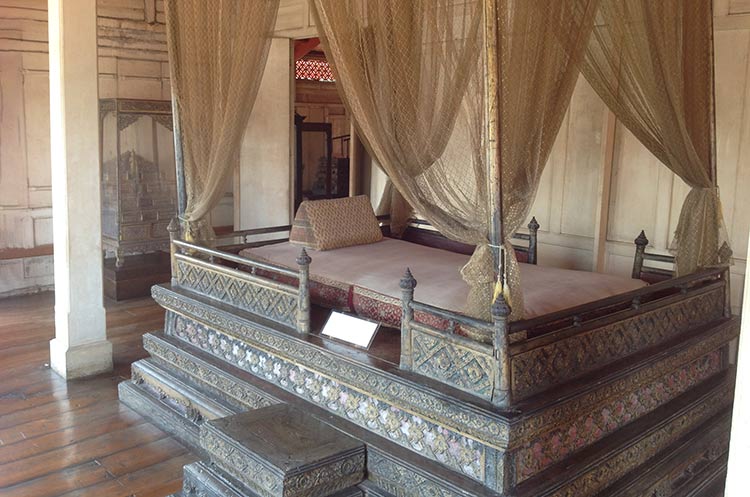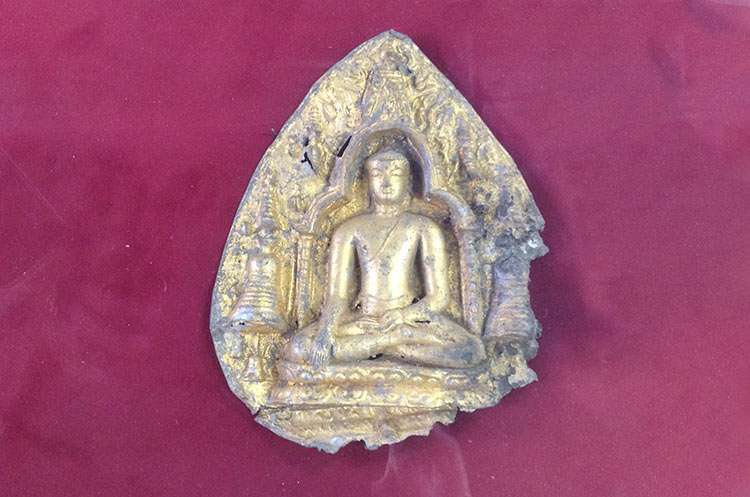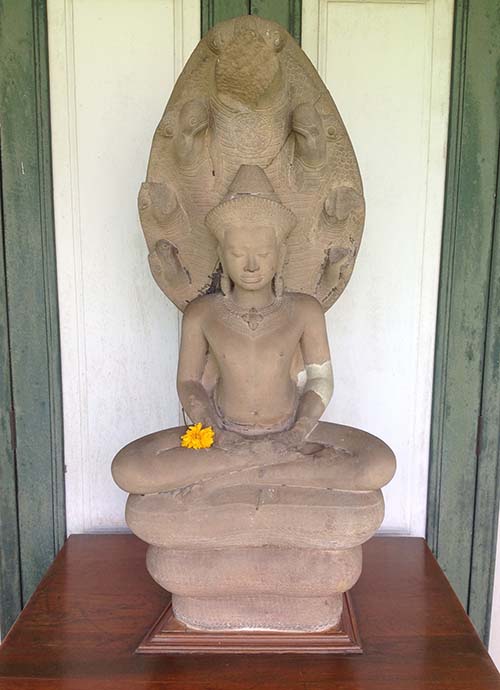
Chandra Kasem Museum
King Mongkut’s former Residence
Chandra Kasem National Museum is one of two museums on the Ayutthaya historical island, the other being Chao Sam Phraya museum.
It exhibits King Mongkut’s living quarters and personal items as well as artifacts discovered during excavations and restorations of ancient temples in Ayutthaya.
Former Royal Palace
The museum is housed in the former Chandra Kasem palace which was built in 1577 by Ayutthaya King Naresuan the Great. Also known as Wang Na or “the Front Palace”, it was destroyed by the Burmese during the 1767 Burmese invasion.
The palace was rebuild by King Mongkut (Rama IV) during the second half of the 19th century. Chandra Kasem served as the Royal residence when the King visited Ayutthaya.
The palace grounds are surrounded by a high brick wall with an entrance gate on each side. On the grounds are two Royal pavilions, the Maha Thai building, the Royal horse stables and an observatory tower.
The exhibition
The museum collection is exhibited in three buildings. Items are labeled in Thai and English, photography without flash is allowed.

Chaturamuk Pavilion
Nearest to the entrance stands the Chaturamuk pavilion, a Thai style wooding building with a tiled roof, its gables adorned with wood carvings.
Built by King Mongkut the pavilion comprises of a Throne Hall and the King’s living quarters including a bed room and a study. The rooms contain personal items that belonged to King Mongkut such as furniture, an elaborately decorated bed, decorative items, paintings and clocks.
Phiman Rataya Pavilion
Next to the Chaturamuk pavilion is the Phiman Rataya pavilion. This building exhibits a large number of objects found during excavations and restorations of temples in Ayutthaya including Buddha images, votive tablets and wood carvings. Among the items is a number of very old Dvaravati and Khmer sandstone images of the Buddha.
Also on display are personal items that belonged to King Mongkut including furniture and wood carvings.
Maha Thai building
The Maha Thai building houses five exhibitions, divided over several rooms.
Ayutthaya Art and Architecture
The exhibition displays items that show the craftsmanship of Ayutthaya artisans including decorative items such as Khmer style carved antefixes, sema stones that marked the sacred area of temple buildings and decorative stuccoed building elements.

Trade ceramics of the Ayutthaya Kingdom
During the Ayutthaya era extensive trade was done with many European and Asian countries. This exhibition displays ceramics from several countries including China and Japan.
Ancient weapons
The ancient weapons room displays weapons used by the Ayutthaya armies including canons, canon balls and a small canon on a howdah, a seat mounted on the back of an elephant.
Buddhist objects
This room exhibits items of Buddhist art including a Buddha footprint, a collection of beautifully lacquered cabinets used to store ancient Buddhist manuscripts and several antique fans used during Royal ceremonies.
Riverside life in the old city
In the last room visitors can see an exhibition themed around the way of life of people who lived around the Chao Phraya river from ancient times until the present day.
Phisai Sanlalak Pavilion
Next to the Phiman Rataya pavilion stands the Phisai Sanlalak pavilion, a four storey observatory tower measuring nearly 22 meters high. The pavilion was built by King Mongkut who used the tower for astronomical observations.

Royal Horse Stables
A brick building which was originally used as horse stables and now contains offices.
Location & how to get there
The museum is located on U-Thong road on the Northeast tip of the historical island.
Opening hours
Chandra Kasem National Museum opens Wednesday through Sunday from 9 am until 4 pm. It is closed on Thai National holidays.
Entrance fees
Admission charged at the ticket booth is (Thai Baht):
Other Museums
Temples in the Ayutthaya Historical Park
Ayutthaya Historical Park Tours
- From Bangkok
- Private or group tour
- Also visit other highlights like Bang Pa-In Summer Palace